Six days in Croatia — beautiful, diverse, and flavorful
Our 15-day “Taste of the Balkans” tour began and ended in Croatia, with destinations in Bosnia and Herzegovina, Slovenia, and Montenegro (also former regions of Yugoslavia) also woven into this great itinerary. But our time in Croatia is where we’ll begin sharing our trip highlights with you. Here’s a sampling of what we loved about Croatia.
Discovering Dubrovnik
Perhaps the most well-known of the Croatian cities is Dubrovnik on the Adriatic coast where our Collette explorations tour began. After a very informative included walking tour of Old Town and its historic landmarks, we took off on our own and packed the day full of activities, but these were our three favorite experiences.
Walking the city walls
Our top Dubrovnik experience was walking the ancient city walls originally built in the 13th century. The views of the sea and the old city below are amazing. There are parts of the walk that can be challenging for people with mobility or health issues as there is considerable uphill climbing, uneven stone steps, and the full circuit takes one to two hours to walk though there are places to exit enabling one to go about halfway.
Riding the cable car up Mount Srd
When in Dubrovnik, don’t miss a chance to take the cable car to the top of Mount Srd. The ride is fun, the views are stunning, and you can enjoy lunch or a drink in the restaurant, too. You can also see a portion of the city walls from above in the photo below.
Finding “Game of Thrones” filming locations
As a Game of Thrones fan, Mr. TWS was thrilled to find the filming locations in Dubrovnik such as the city walls, Fort Minčeta, Lokrum Island, and the Jesuit Steps. I did the “walk of shame” on the Jesuit Steps — but since I kept my clothes on it was a version rated appropriate for all audiences. You can see the video in our Instagram gallery.
From Venice to Tuscany in Croatia’s Istria region
As we drove into the Istria region in northwestern Croatia, it was easy to picture it as part of Italy — which it actually was until 1947. You’ll find landscapes, cuisine, and traditions reminiscent of Venice in the coastal towns and of Tuscany in the rolling hills and hilltop villages further inland.
“Venetian Croatia”
Rovinj
We thought of our visits to Venice when we entered Rovinj, the cultural center of Istria. Not only because of the setting on the water and Venetian-style architecture, but we could also hear snippets of Italian being spoken as we strolled along the waterfront. Shops, restaurants, and galleries line some of the stairways and alleys leading to the top of the city where the cathedral stands.
Mr. TWS and I felt that Rovinj had a strong feeling of romance and on this beautiful sunny day we had a nice romantic light lunch at a restaurant along one of the cobblestone streets.
If you look down some of the narrow lanes as you pass, you’ll find areas that are quieter and seem more residential with flower pots on windowsills, laundry hanging on lines above, and bicycles leaning against doorways.
“Tuscan Croatia”
We felt like we were transported to Tuscany surrounded by vineyards and olive groves on the rolling hills when we traveled to inland Istria. Signature features of this part of Croatia are the picturesque hilltop towns crowned with medieval city walls and towers, with homes lining the roads winding down the hillsides.
Motovun
Motovun, the highest hilltop town in Istria, was our home for three nights at Roxanich Winery and Design Hotel. It was a great base for our tour activities, including our visit to Rovinj, truffle hunting, and olive oil tasting.
In our free time, we also went to the hilltop to walk the medieval city walls and enjoy the panoramic views. There is a shuttle bus that runs up and down the hill. We chose to ride it up, but enjoyed the walk down.
Truffle hunting
At Prodan Tartufi we spent a delightful morning with the owners of this family run business and two of their truffle-hunting dogs in the woods on the family’s property in Buzet. We followed along as the dogs sniffed their way through the woods until a black truffle treasure was found. Delicious brunch dishes like scrambled eggs with truffle shavings on top were prepared and served to us in the beautiful hilltop setting topping off a perfect experience.
Olive oil tasting
Olive oil production is important to the people of Istria. The mostly small family-run operations produce what is considered some of the best oils in the world. The area’s particular climate extremes — hot and dry seasons, cool nights, and the wind are reasons for the high quality of the olives and olive oil. Our visit to Oleum Vitae in Krasica included instruction about how to best sample the oil to fully appreciate the quality and freshness. We tasted two oils, one which had just been pressed the night before.
People and traditions
At our hotel in Licko Petrovo Selo, Hotel Lyra near Plitvice Lakes, we were introduced to Sonja Leka of the Tara Association. The association was founded after the 1990s war when refugees returned to the area. Sonja told us about those difficult times and the work of the association which provides purpose and income for the women. Mostly older ladies, they knit various woolen items like gloves, socks, and hats; and make jams and other traditional food products. Some in the Tara community are also employed by the hotel.
You might be surprised to learn that the most popular of their woolen items is the nakurnjak (codpiece). Although now a fun and unusual souvenir for tourists, the “willie warmer” was very practical when there was little protection from the elements for sensitive parts before the introduction of modern men’s underwear.
Natural beauty
Plitvice Lakes National Park
Plitvice Lakes is the most well-known of Croatia’s national parks and is designated as a UNESCO World Heritage Site. We were delighted that Sonja Leka was our guide here.
“50 shades of green” is one way that Sonja described this gorgeous national park during our three-hour walk. Peace and tranquility can be found in the lush forests and among the 16 clear emerald-hued lakes. Step by step we walked the paths of the park in awe of every sight. We walked on the wooden plank paths high up on the cliffs and down below alongside the clear lakes among the forest’s wildflowers.
We were told that the park’s beautiful waterfalls were not as voluminous this year because of drier than normal seasons, but they captivated us nonetheless.
It was lovely to be there in autumn to see the beginning of the foliage color changes.
Walking around the park tip: You can start your walk/hike from either Entrance 1 or Entrance 2. If you begin at Entrance 1, as we did, you will be facing the best waterfall scenes along the way.
Wine and spirits
I was surprised and delighted to find that Croatia produces some great wines, especially whites. The primary wines produced in Istria are Malvazija (dry white) and Teran (red). Other wines we enjoyed were Pošip from the island of Korčula, and Graševina from the Slavonia region of Croatia.
Roxanich Winery and Design Hotel produces its own creative vintages using long aging, natural processes, different from those I’ve come across in the U.S. and other wine regions of Europe. We had a great tour of the winery (all four levels of it) and then a tasting of several of their varietals, some of them named after the six daughters of owner Mladen Rožanić. The eye-catching amber-hued glass of wine in the photo below is named after Lara.
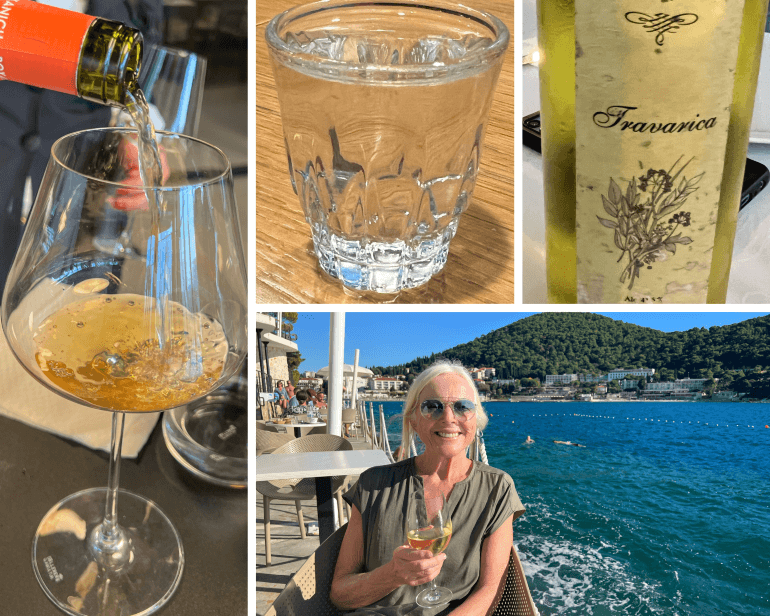
Roxanich amber-hued wine called “Lara”, plum rakija, Travarica rakija, Sweeney with a glass of Pošip at Hotel More in Dubrovnik
A delightful and potent traditional liqueur of Croatia is rakija, a brandy made with fermented fruit like plums. It is a staple of the Croatian diet and is often served as a welcoming drink for guests. The glass with clear rakija in the photo above was served to us by Sonja at the lakes. Travarica (which we had at our welcome dinner in Dubrovnik) is a type of rakija that is infused with aromatic herbs and is served mostly in coastal Croatia.
Dining experiences
We enjoyed fresh seafood, especially fresh white fish which was among many common offerings on menus along the coast. Although seafood is not at the top of my list of favorite foods, I enjoyed sea bass prepared in parchment on our first night in Dubrovnik, and Mr. TWS had sea bass several times. I also enjoyed the fresh lake trout served whole at Hotel Lyra near Plitvice Lakes.
Hearty meat dishes were more common inland. A Croatian specialty is the “under the bell” meal, hearty dishes consisting of lamb or beef that have been roasted in their own juices for hours under a large iron bell-shaped cover. Following our hike around Plitvice Lakes, our lunch was served in Licka Kuca, a cozy and rustic restaurant nearby. Our main course was the Lika Bundle, lamb with vegetables and potatoes, which was followed by dessert of apple and plum strudel.
While in Motovun one evening, we drove up into the hills to Agroturizam Štefanic, a family-owned restaurant since 1780 serving delectable dishes made with ingredients produced on their property. The main courses of homemade pasta and tender ox were paired with their own special wine and followed by fried dough pastries.
Our final day on the tour, we had one more delicious taste of the Croatia — a creamy baked dish called strukli that is particularly associated with Zagreb. On our own, we ate at La Štruk, known as a top spot for this quintessential Zagreb dish. They make it all to order here so give enough time in your schedule (about 30 minutes to prepare the dish). We shared the original version as well as the pumpkin seed version. Both were excellent. Sweet strukli is also popular, but we didn’t have time (or room) to try it.
Farewell to Croatia in Zagreb
We were quite taken with Zagreb, Croatia’s capital, although we were there for only a short time, one day before our flights back home. A city of parks and striking architecture, it has Austro-Hungarian history and influences giving it a very Vienna-style ambiance. We took an included tour of the old city when we arrived and then spent some time enjoying one of the lovely parks before our farewell dinner with our Collette tour manager Djukan Djukanovic and new friends.
More to come about our Collette Taste of the Balkans tour, including our stays in Montenegro, Bosnia, and Slovenia.
Disclosure: Our wonderful Balkans experience was sponsored by Collette, but the views and perspectives we’ve shared are totally our own, as always.
PIN IT!

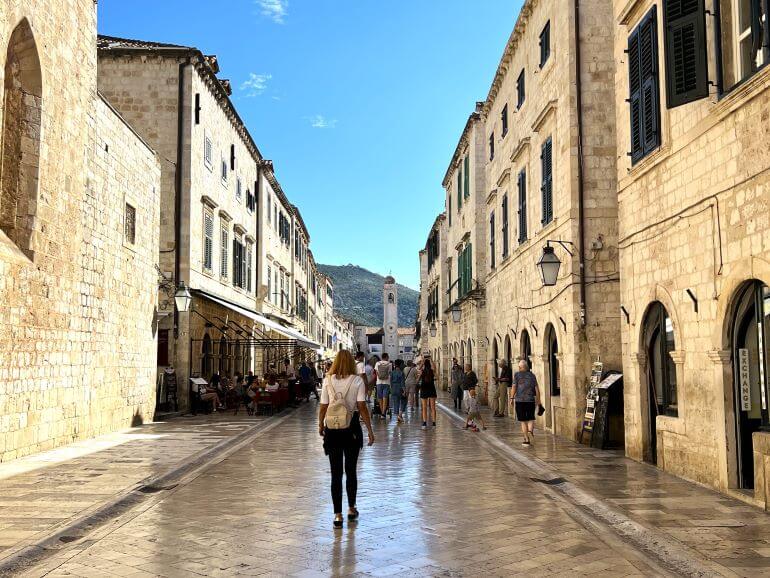
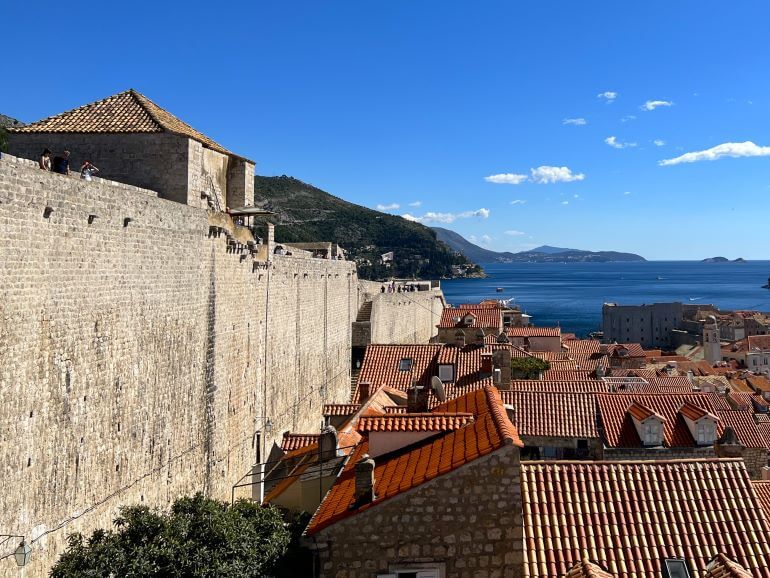
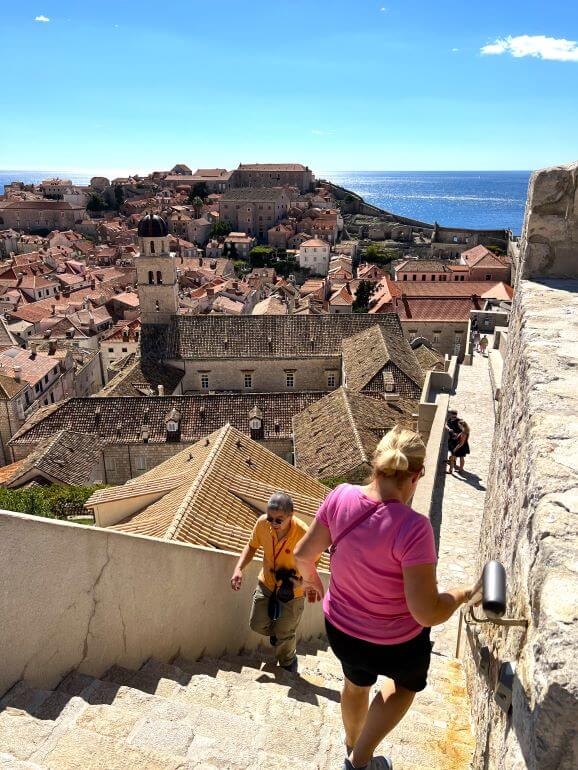
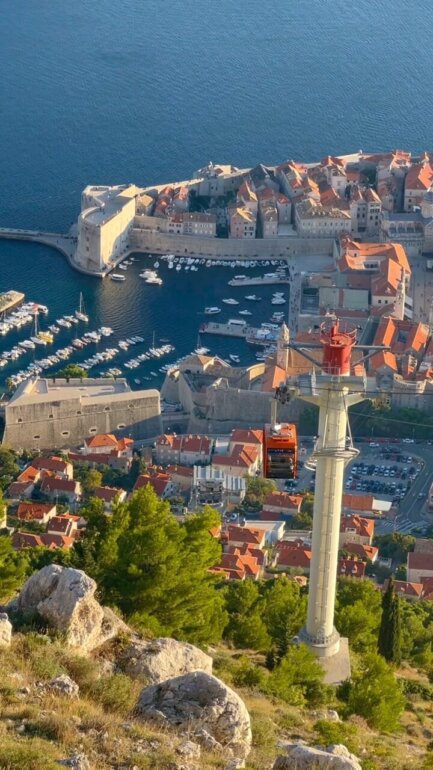
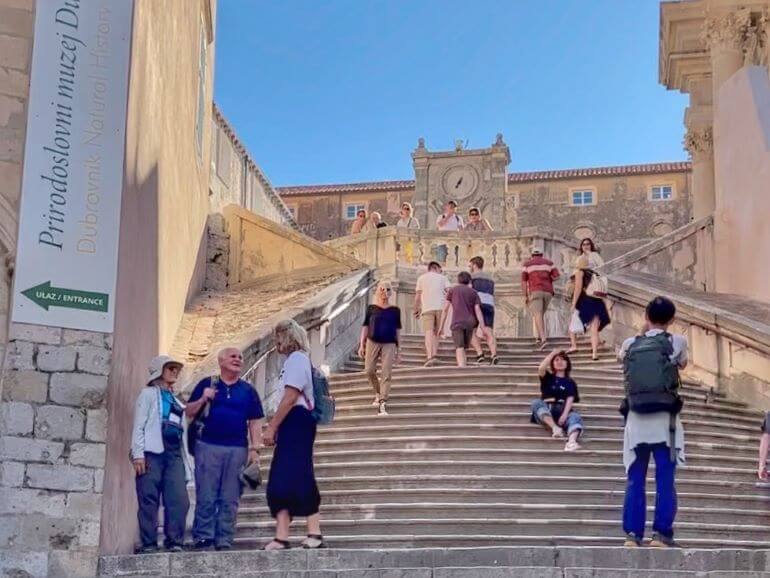
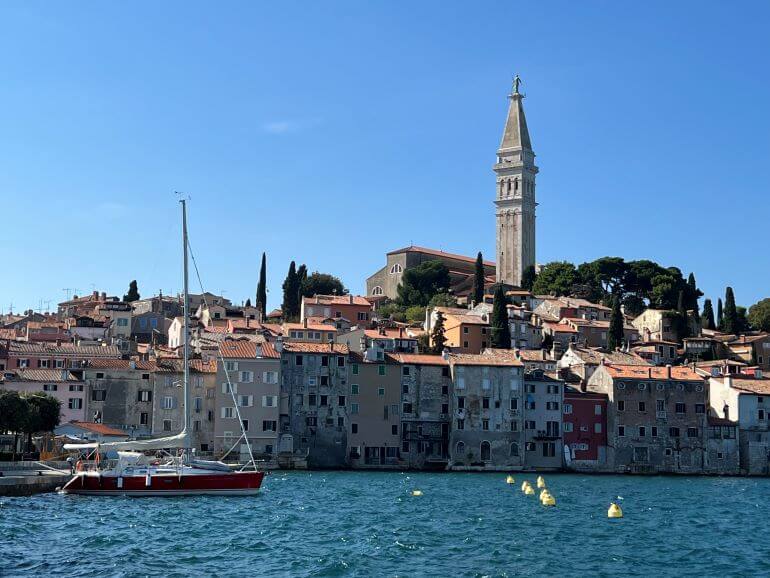
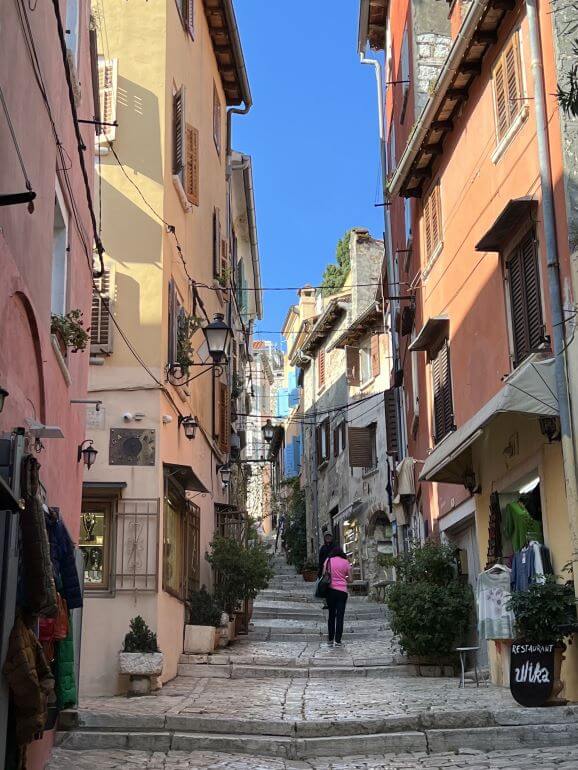
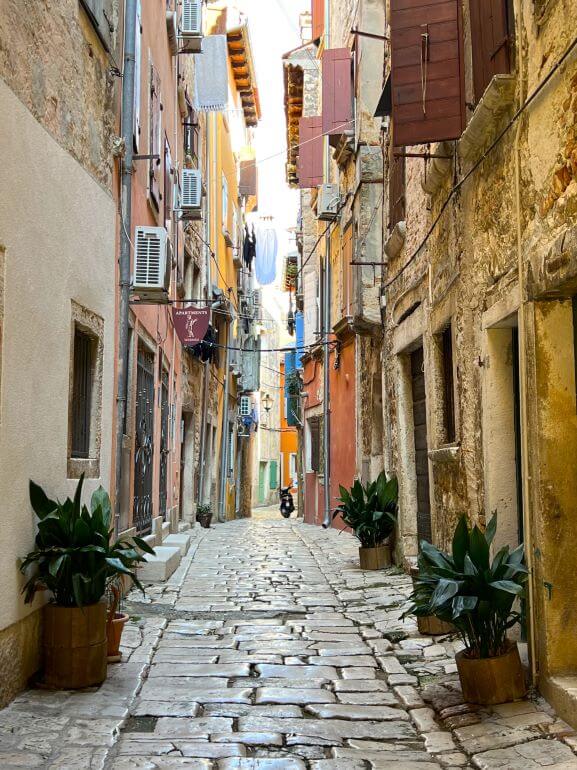
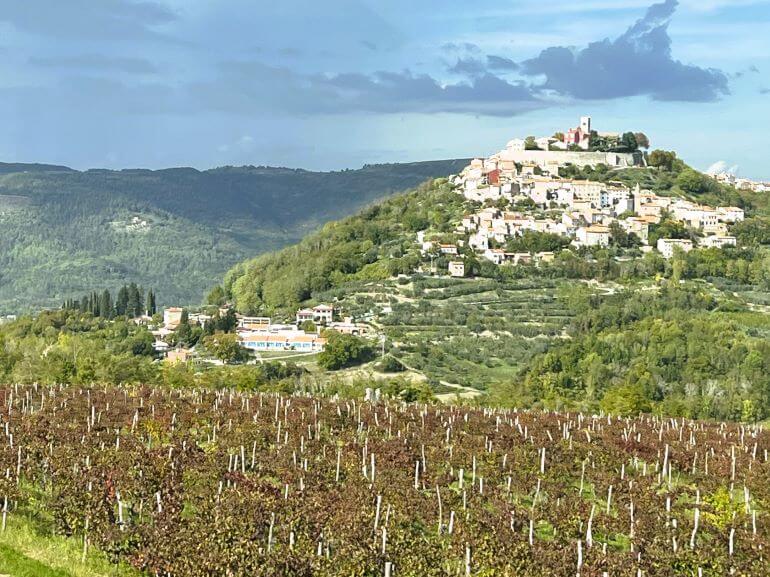
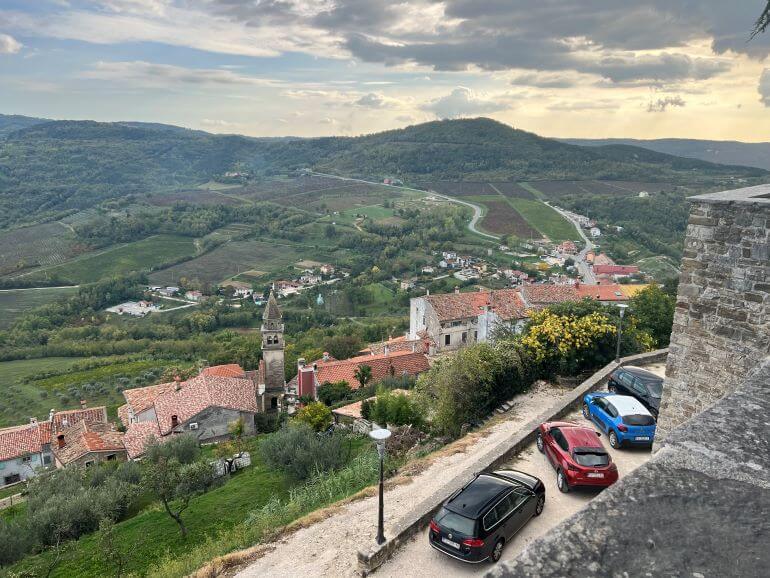
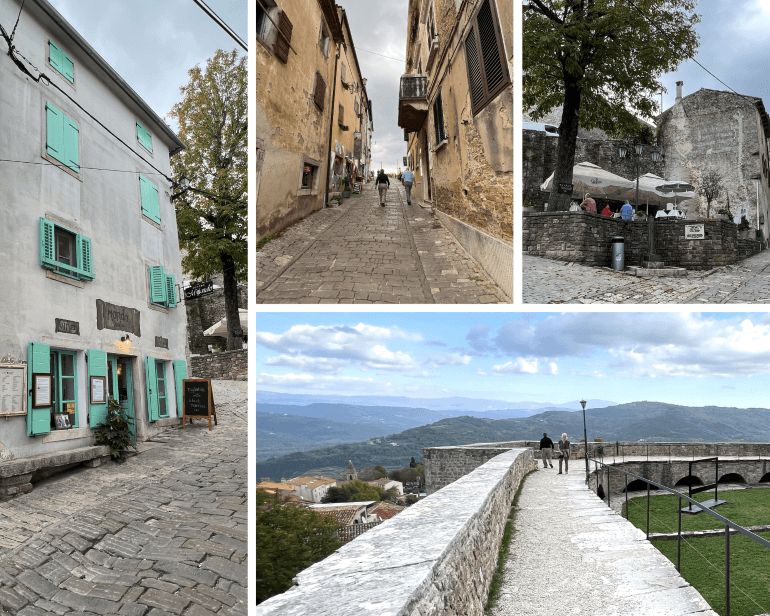
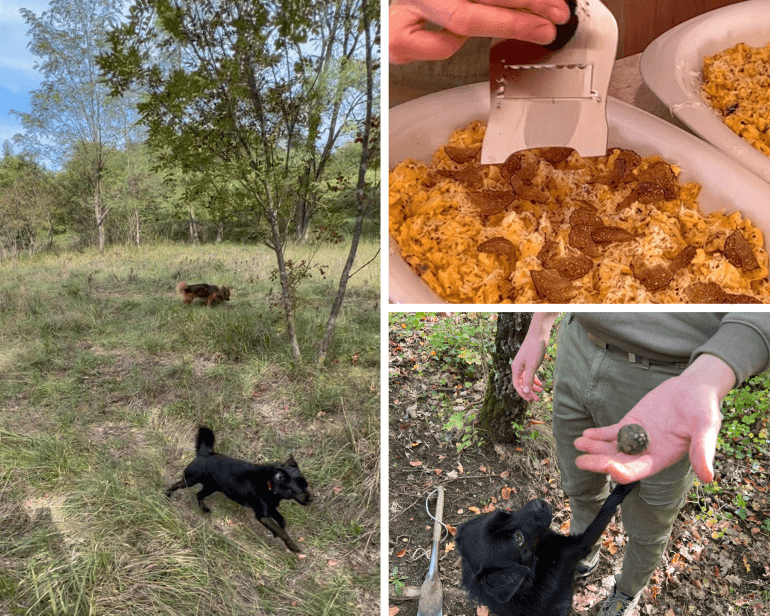
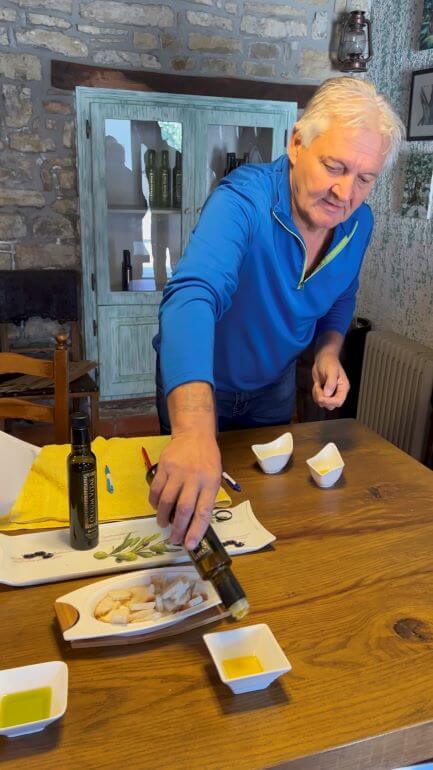
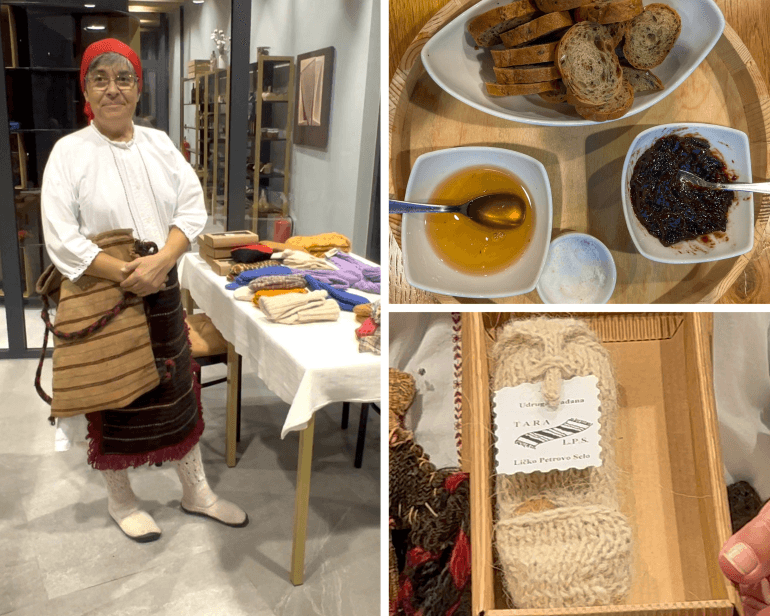
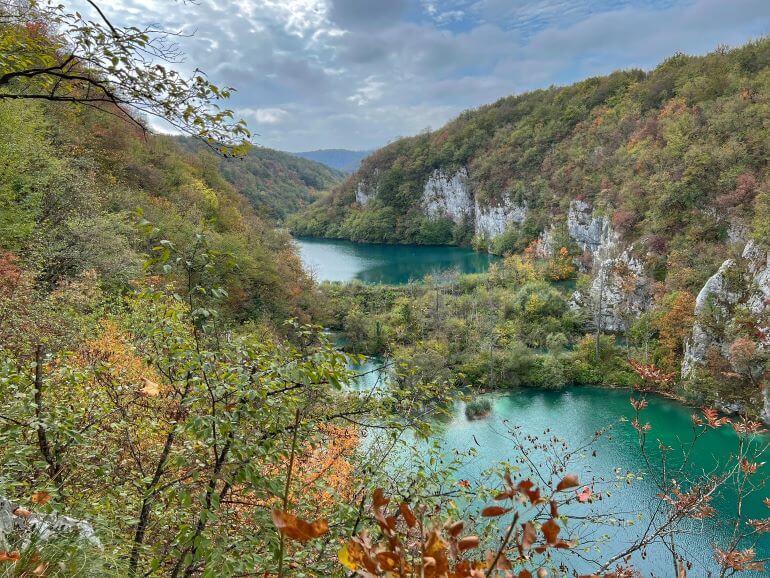
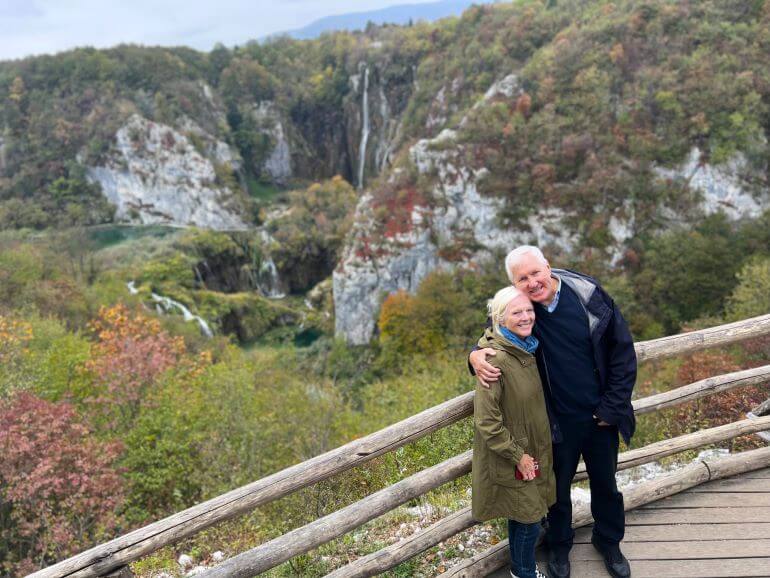
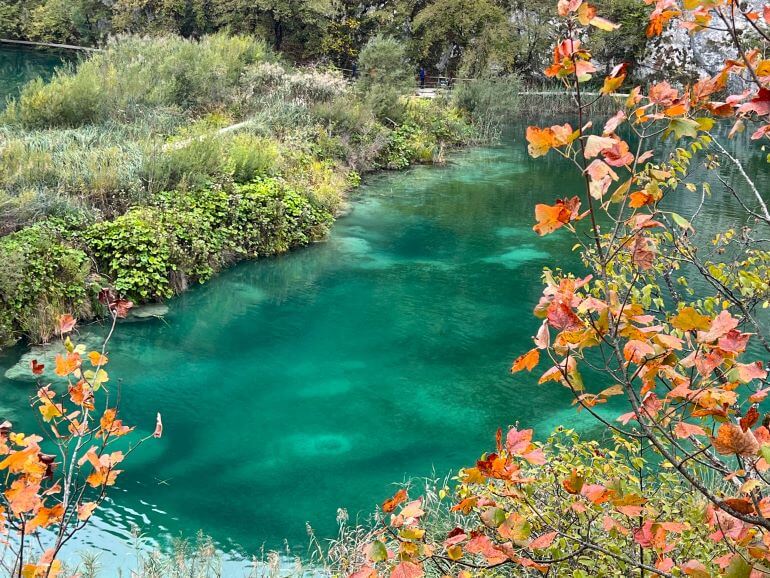
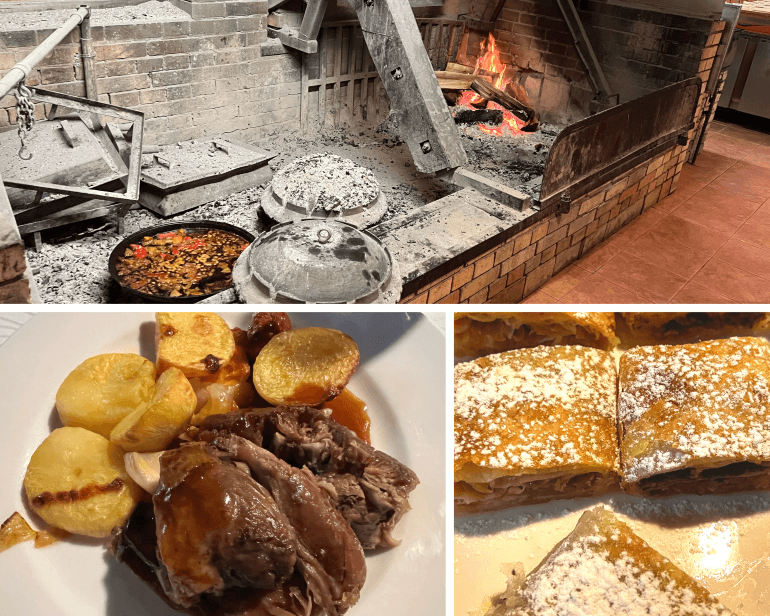
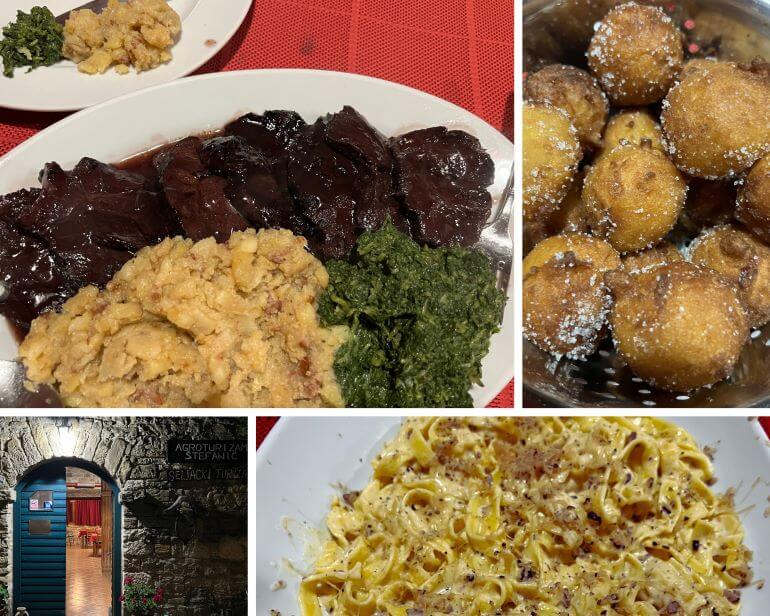
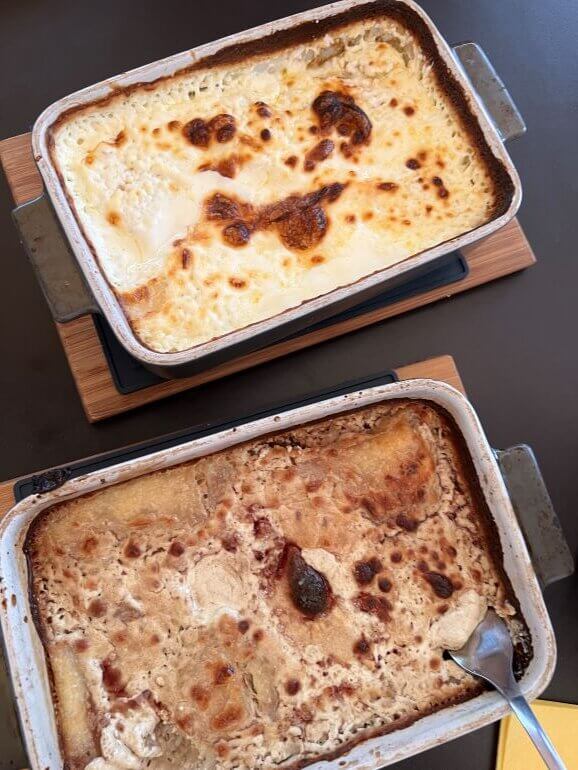
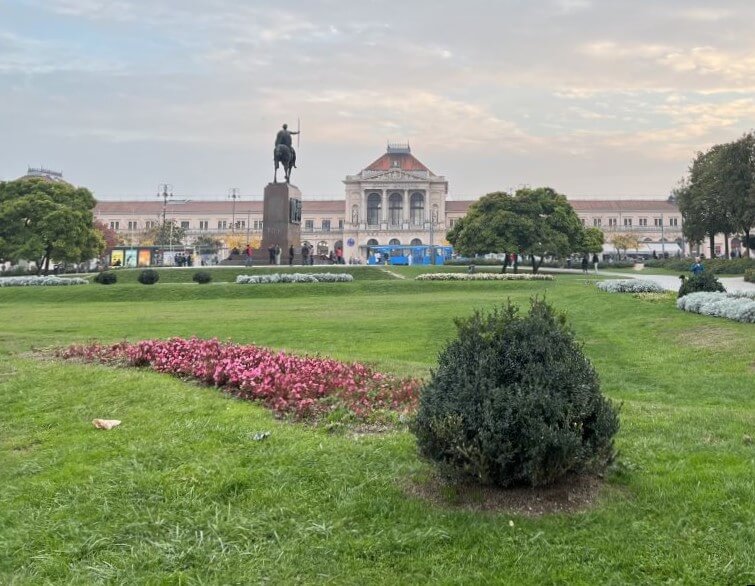
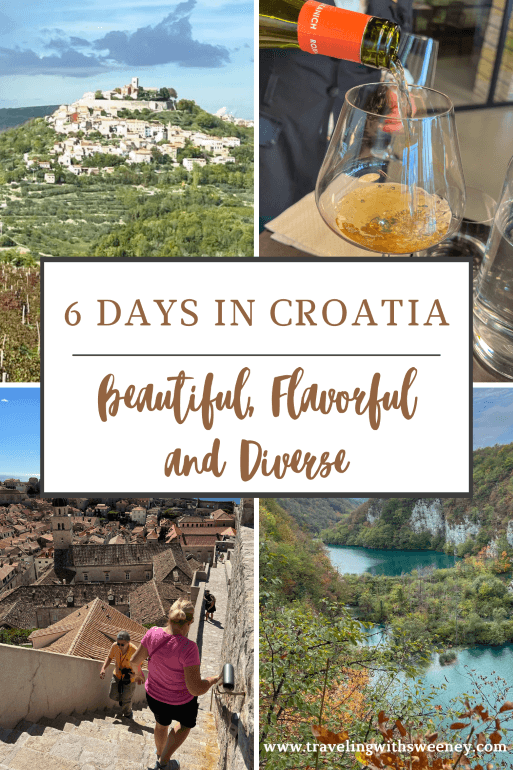
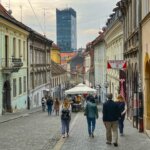
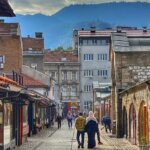
I hope groups like the Tara Organization that you described will be able and willing to guide returning Ukranian refugees. I was stunned by the ferocity of the 1990s wars that attended the break-up of Yugoslavia. I thought Europeans had learned something from the awfulness of World War II, but here we are in the 21st century with another European conflict that mirrors the destruction and displacements of WW II.
Now that I’ve depressed myself, your photos and descriptions of your time in Croatia are very appealing, a nice combination of historical towns and beautiful scenery. Your Collette itinerary seems perfect, some guided time with a group, but also plenty of “free time” to explore on your own.
I have to travel vicariously these days, so i very much appreciate your travel writing that provides some “you are there” photos and narrative
I hope so, too, Suzanne. I’ve talked to so many people who share our concerns about Ukraine. I wish I had the answers.
What a wonderfully delicious tour! So many culinary influences! The “under the bell” meal seems to be almost Ottoman. I love how you met so many people along the way.
What am amazing adventure – this is now on our list of travel destinations!
Great photos, Cathy! I’d love a cold glass of Lara on the waterfront.